
Survivorship bias The Decision Lab
Survivorship bias, or survivor bias, occurs when you tend to assess successful outcomes and disregard failures. This sampling bias paints a rosier picture of reality than is warranted by skewing the mean results upward. Survivorship bias is a sneaky problem that tends to slip into analyses unnoticed.
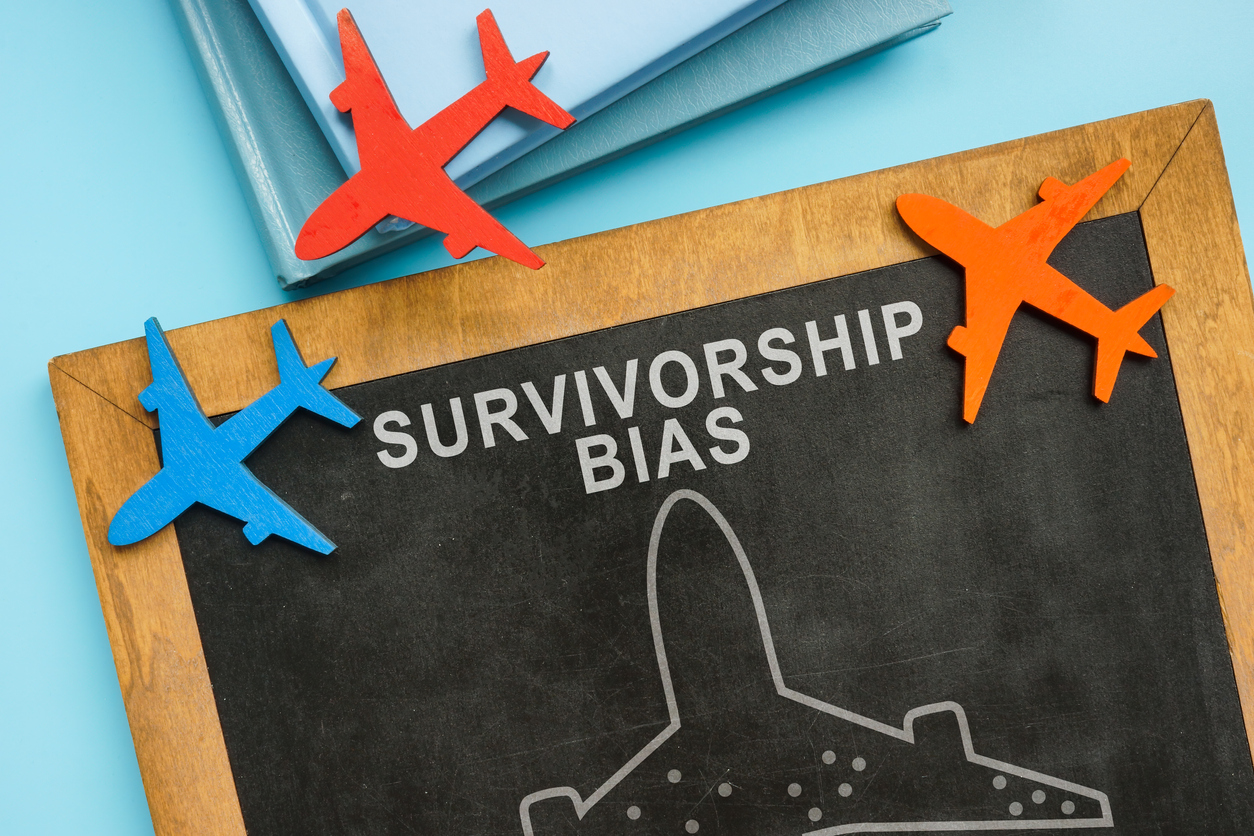
Survivorship Bias 101 Black Belt in Thinking
In finance, survivorship bias is the tendency for failed companies to be excluded from performance studies because they no longer exist. It often causes the results of studies to skew higher because only companies that were successful enough to survive until the end of the period are included.

Survivorship bias when failure gets Ness Labs
The specific image of the "survivorship bias plane" comes from a Wikipedia editor McGeddon, and the photo is based on past work by Cameron Mill in 2005. As the creator of the original Wald diagram in 2005 that inspired the duplicates that have followed, absolutely yes.
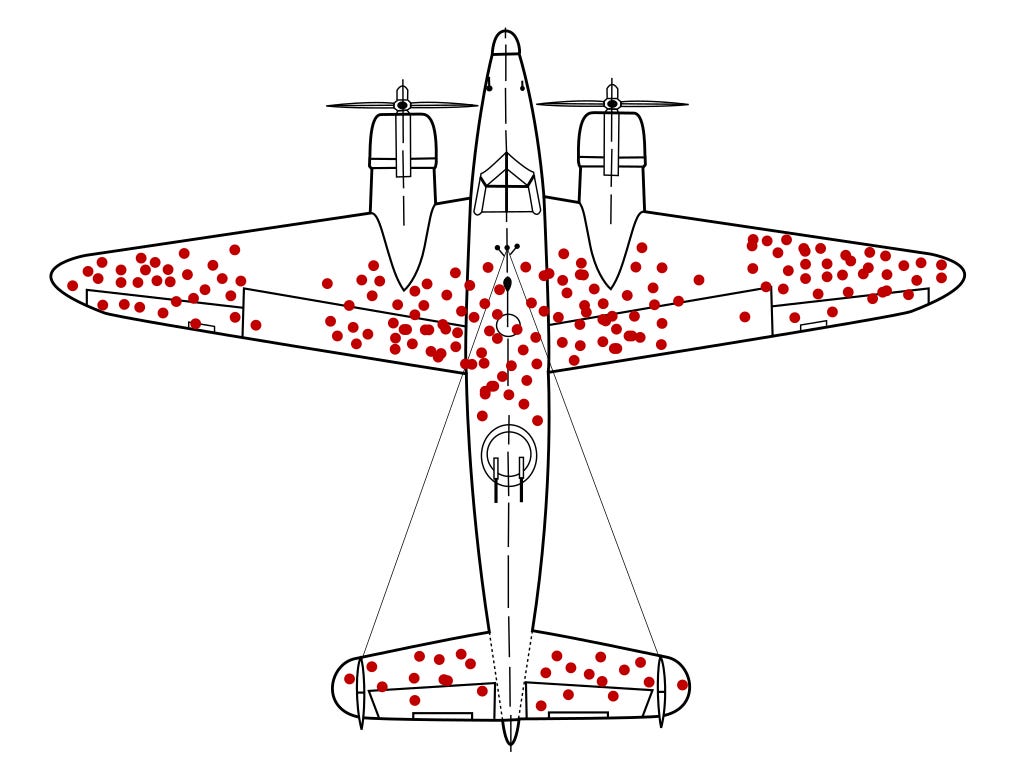
Grad School and Damaged Planes by Chad Orzel Counting Atoms
Survivorship Bias. Jun 28, 2021. In World War II, the US Military examined damaged aircraft and concluded that they should add armor in the most-hit areas of the plane. Abraham Wald at Columbia University proved this was the wrong conclusion, that instead, adding armor to the least hit areas of the aircraft is more effective.

The Truth About Success Avoiding Survivorship Bias in 2024
Survivorship bias (or survivor bias) is a cognitive fallacy in which, when looking at a given group, you focus only on examples of successful individuals (the "survivors") in the selection process rather than the group as a whole (including the "non-survivors").

7 Lessons on Survivorship Bias that Will Help You Make Better Decisions
Wikipedia About Survivorship Bias Plane also known as Plane With Red Dots refers to a reaction image meme showing a diagram of a plane with red dots collected on its wings. The image is sourced from a Wikipedia page about survivorship bias, with World War II planes being used as an example of the concept.

Survivorship Bias Adam James
Survivorship bias is a type of selection bias where the results, or survivors, of a particular outcome are disproportionately evaluated. Those who "failed", or did not survive, might even be ignored. Focusing on the survivors can result in a false, or incorrect, estimate of probability.
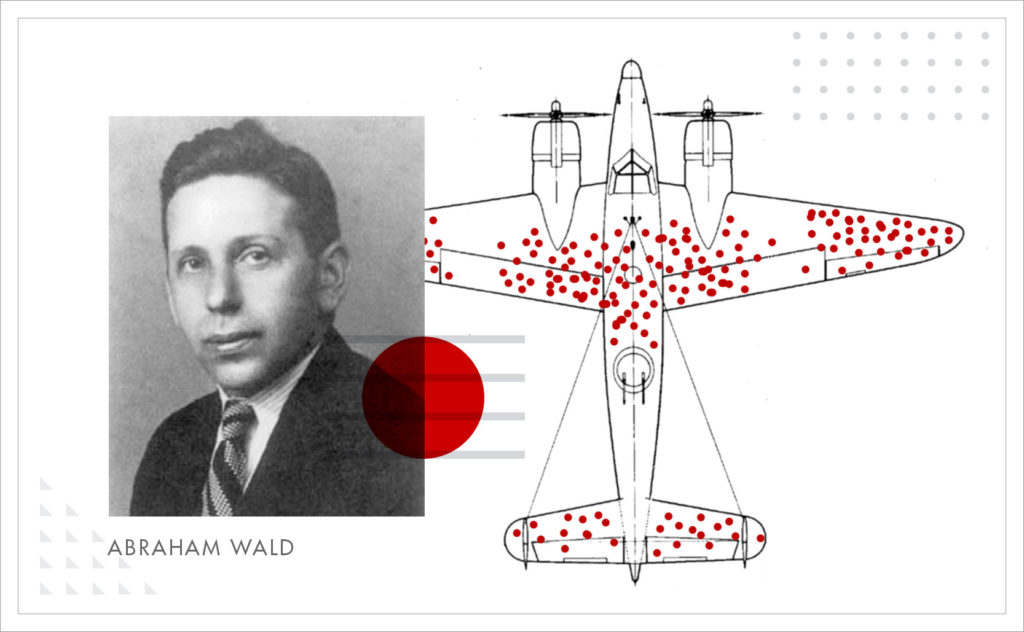
Survivorship Bias
Survivorship Bias - Abraham Wald and the WWII Airplanes by Jerry Silfwer Survivorship bias is a tricky phenomenon. During World War II, the Allies studied Nazi damage to their airplanes. Their study resulted in this dotted illustration: This airplane seems to have some sort of condition.

How to avoid being duped by survivorship bias Richard HughesJones
Survivorship bias is a form of selection bias. It occurs when a dataset only considers existing (or "surviving") observations and fails to consider observations that have ceased to exist.
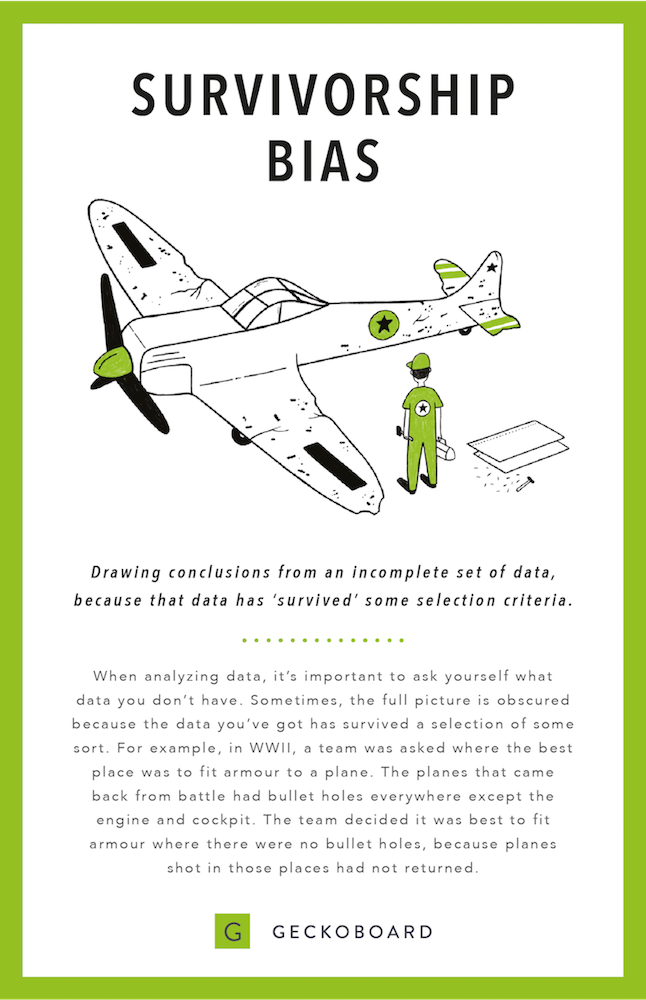
Survivor bias and the mistake of stability Harro
In statistics, survivorship bias can be defined as a form of sampling bias in which the observations taken at the end of a period of study do not conform to the random subset of the observations made at the beginning of the study.

Survivorship Bias Plane Exmplained Survivorship Bias Plane Know
The most classic example of survivorship bias is still one of the easiest to understand: Abraham Wald and his analysis of U.S. aircraft during World War II. Wald, a notable mathematician, was.
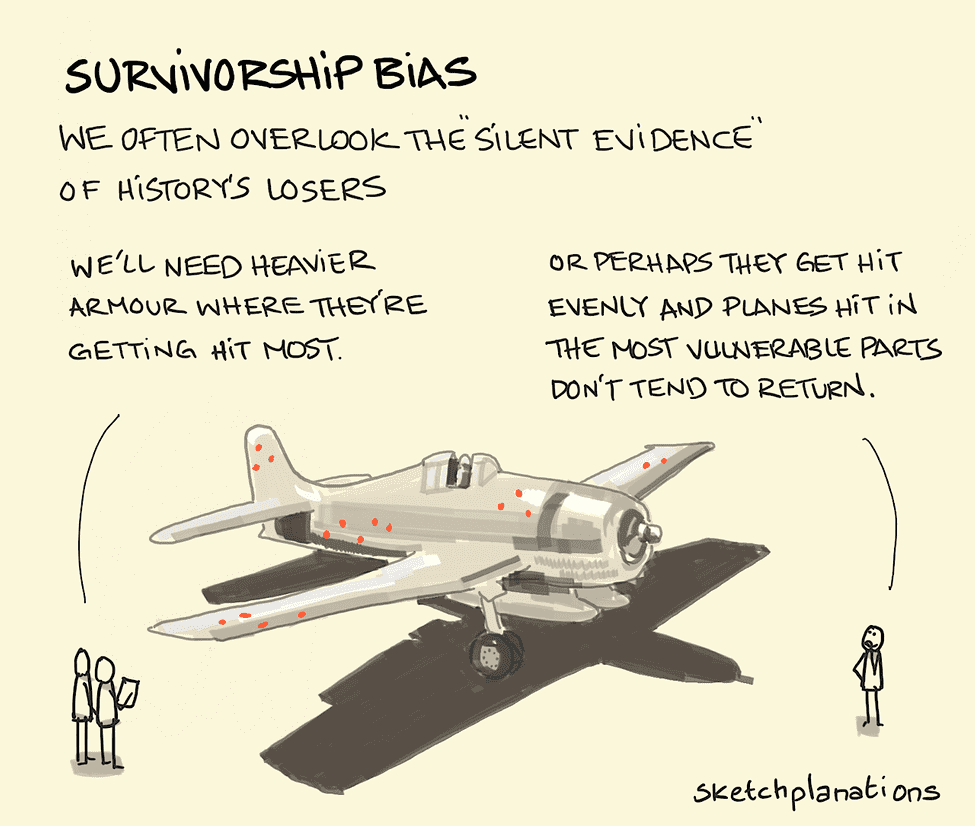
Survivorship Bias Aseem Shrey
Survivorship bias is the act of focusing on successful people, businesses, or strategies and ignoring those that failed. For example, in WWII, allied forces studied planes that survived being shot to discern armor placement. By neglecting bullet holes on lost planes, they missed armoring planes' most vulnerable areas.

There's This Thing Called "Survivorship Bias" Physiqonomics
The most famous example of survivorship bias dates back to World War Two. At the time, the American military asked mathematician Abraham Wald to study how best to protect airplanes from being.

How to lie with big data Medium
Survivorship bias - lessons from World War Two aircraft I don't know about you, but I spent quite a bit of my Easter fighting in 1940 Western Europe. My teenage daughter, Zoe, playing the Axis powers, made quick work of France. England was standing alone as the German navy massed in the channel.
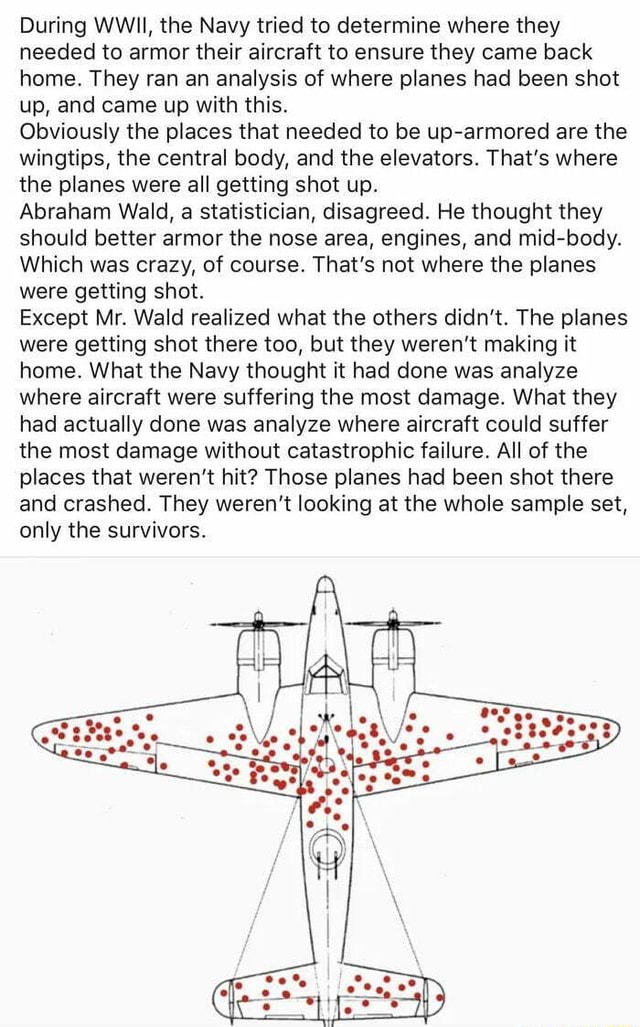
Survivorship bias During WWII, the Navy tried to determine where they
World War II plane research: During World War II, statistician Abraham Wald and his research team at Columbia University encountered a fascinating example of survivorship bias in their study of bomber planes. Their task was to recommend areas for reinforcement on the aircraft based on an analysis of the damage sustained by returning planes.

WW2 Engineers Made The Mistake Of Only Analyzing Surviving Planes Not
During WWII, countries had to solve many mathematical and strategic tasks in order to succeed during the war. One of those difficult assignments was to find ways of improving aircraft so they would be more resistant to enemy fire. While statisticians struggled to find the best way to protect the planes, one man named Abraham Wald had a genius idea that is implemented in many places to this day.